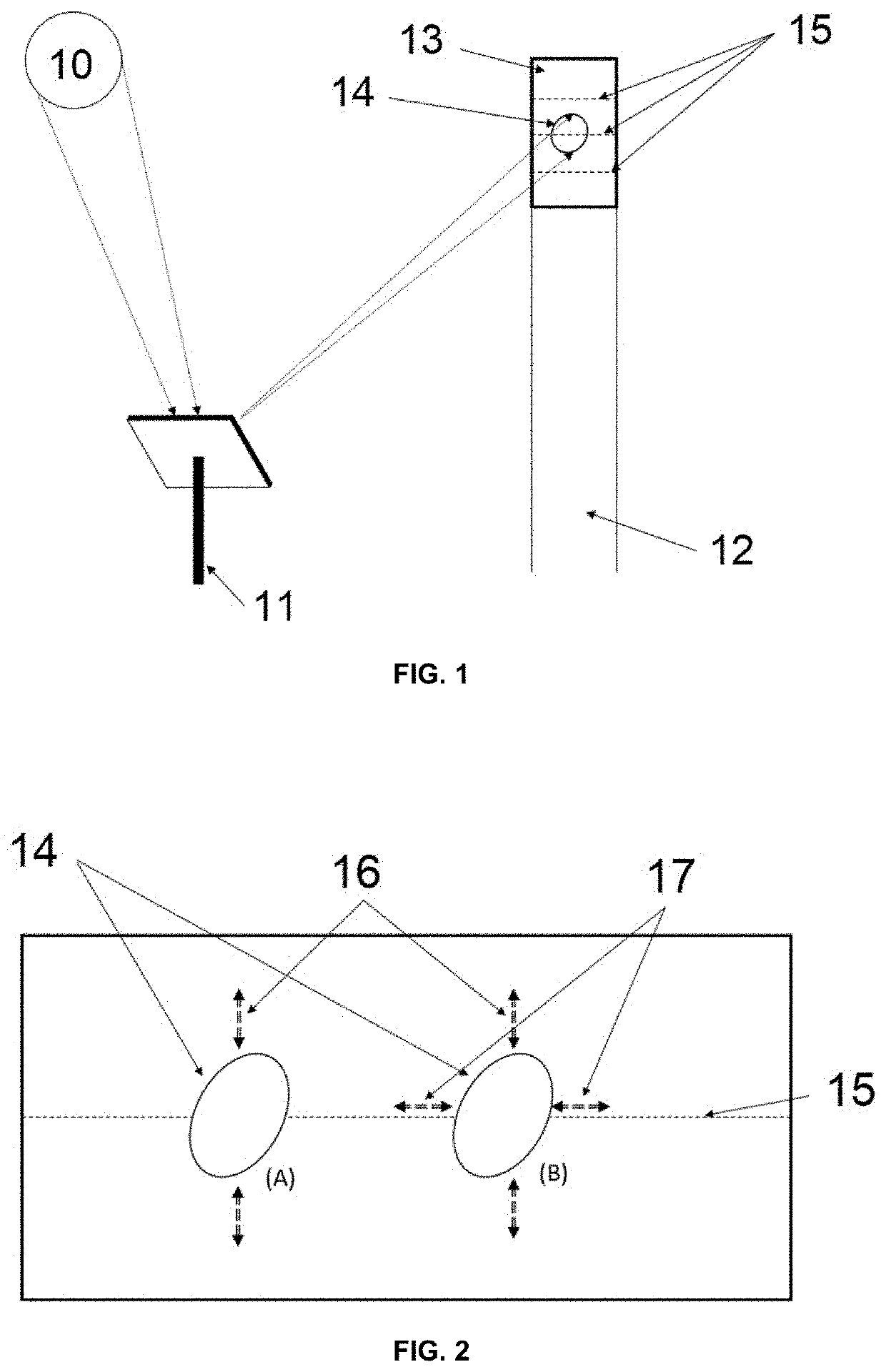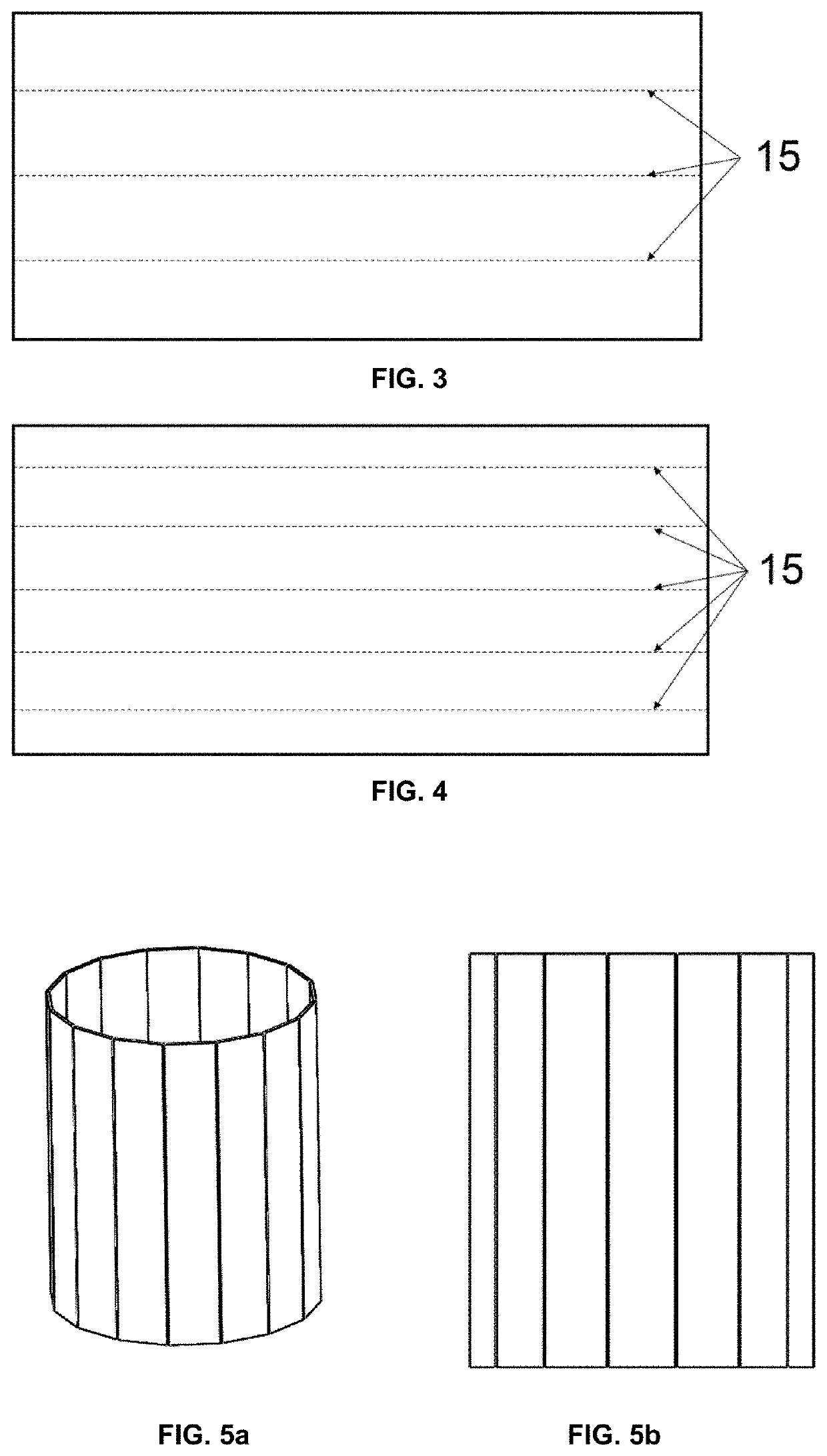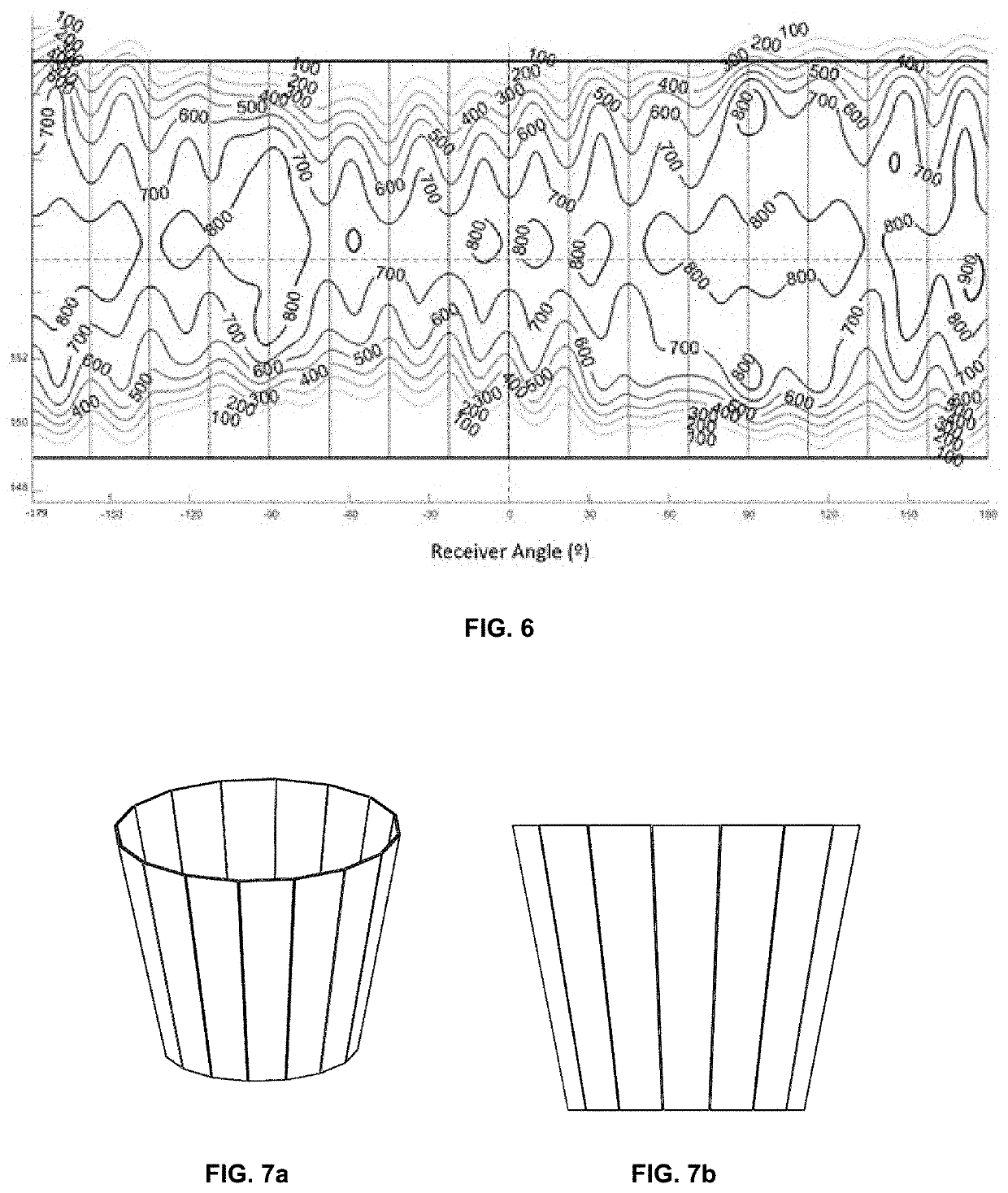Asymmetric solar receiver
a solar receiver and asymmetric technology, applied in the direction of solar heat collector details, solar heat collector mounting/support, light and heating apparatus, etc., can solve the problem that none of the prior art proposals combines the known asymmetry
- Summary
- Abstract
- Description
- Claims
- Application Information
AI Technical Summary
Benefits of technology
Problems solved by technology
Method used
Image
Examples
first embodiment
[0058]asymmetric solar receiver (13) according to the invention is depicted in FIG. 8a-8b. As shown in the figure, the panel structures (18) forming the receiver (13) comprise smaller area in one of the regions, where the panel structures are shortened in their upper and lower ends. Said asymmetric receiver (13) is installed in the tower (12) with its smaller area region oriented towards the south, while its bigger area region is oriented north. Thus, the number of heliostats (11) in the solar field can be rearranged for optimal efficiency compared to the case of a cylindrical receiver (13), so that a number of them will be located in the north field instead of in the south field.
[0059]Despite in these figures this receiver (13) is formed of vertical panel structures (18) wherein each panel structure is formed by only one panel, in different embodiments, each panel structure could also be divided into several unitary panels, so that the height of each panel structure is the result o...
PUM
 Login to View More
Login to View More Abstract
Description
Claims
Application Information
 Login to View More
Login to View More - R&D
- Intellectual Property
- Life Sciences
- Materials
- Tech Scout
- Unparalleled Data Quality
- Higher Quality Content
- 60% Fewer Hallucinations
Browse by: Latest US Patents, China's latest patents, Technical Efficacy Thesaurus, Application Domain, Technology Topic, Popular Technical Reports.
© 2025 PatSnap. All rights reserved.Legal|Privacy policy|Modern Slavery Act Transparency Statement|Sitemap|About US| Contact US: help@patsnap.com



